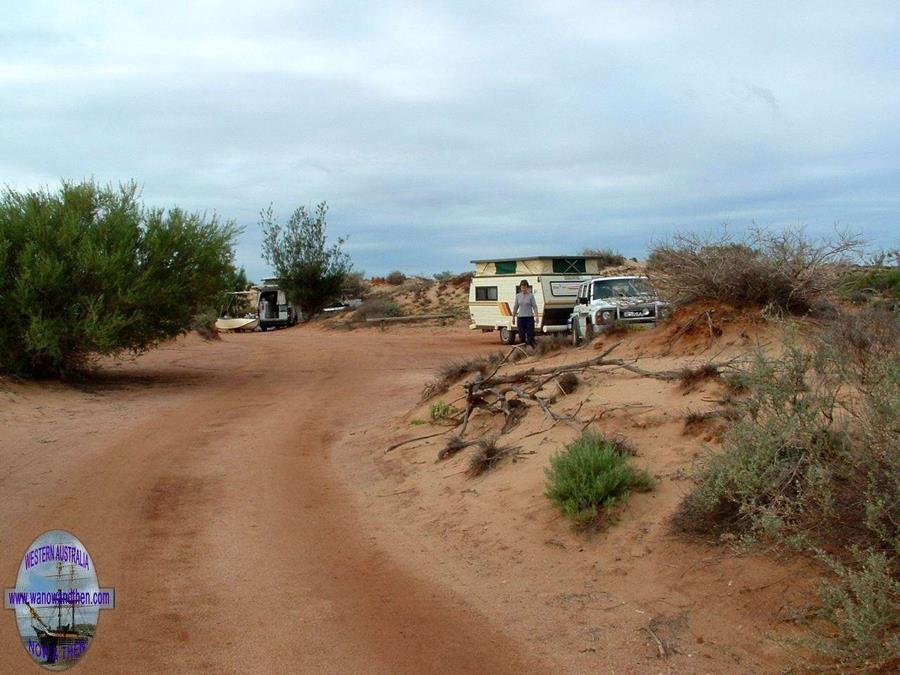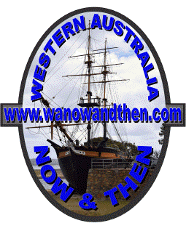|
|
|||
|
|
|
|
|
|
|
|||
CAPE RANGENINGALOO and NORTH WEST CAPE
GPS 22 09 22 S 113 59 49 E
WE NEED YOUR SUPPORT.
|
|
An area of land comprising the Exmouth Peninsular, and Cape Range. The cape was named in 1818 by P.P. King. It did have an alternate name, Cape Murat, given by Nicolas Baudin but it was King's choice of name that was adopted.
The cape is bordered on the west by Ningaloo Reef, and on the east by Exmouth Gulf. Areas of interest include Coral Bay, Ningaloo Marine Park, Cape Range National Park, Exmouth town site, Kailis Fisheries, Vlamingh Head lighthouse, Milyering Visitor Centre, Yardie Creek, and the canyons that are accessed from the Exmouth road.
The Range was once part of an ocean floor and it contains a large number of marine fossils.
Cape Range is a rugged outcrop of hills running south from Exmouth almost all the way to Coral Bay. At its highest point it reaches 314 metres and contains a number of weathered canyons. Two, Potshot and Charles Knife, are within easy reach of Exmouth town.
A 4wd trip down the west side of the range with a stop off at Yardie Creek is a must for all those with adventurous spirits. Try to take some camping gear with you and stop overnight. Travelling slowly and exploring the area is most rewarding. Remember to take plenty of water as there is none available. It will not be possible to do this drive if Yardie Creek has broken through to the sea.
The park was originally pastoral land but was declared a National Park in 1964. The adjoining Ningaloo Marine Park that stretches 260 km along the coast was declared in 1987.
Camp fires, pets and firearms are not permitted within the National Park. The maximum speed within the park is 80 kph, and night driving should be avoided.
Cape Range National Park campsites
On the west coast a National Park runs from just south of the Tantabiddi boat ramp all the way to Yardie Creek and entry fees apply.
South of Yardie Creek you will find free camp sites but there are no facilities and NO WATER. You need a 4wd to cross the sandbar at Yardie Creek. (NOTE: The creek may sometimes break through to the sea making access further south impossible.)
Of the campsites in the national park, Mesa Camp is the best for large vehicles. The main road is now sealed ALL THE WAY to Yardie Creek. Water for washing is available south of the entrance to Neds and Mesa Camps on the main road. Entrance fee PLUS camping fees apply here as in most other national parks.
Gidgee and spear gun use is prohibited in the park. Generators are allowed at some campsites but are restricted to 8am-9pm. All fires are prohibited. Sites to be vacated by 10am.
Despite the number of visitors to the area, this coastline remains one of the most pristine and attractive in W.A. It is to be hoped that it will be kept just as it is today for future generations to enjoy and that greedy developers are kept out of the area.
NED'S CAMP.
Good beaches for children, fishing. Can launch small boats over beach. 15 campsites. No generators in northern section.
MESA CAMP.
Good beach for children, fishing. Overflow campsite. 13 campsites. *
NORTH T-BONE
Good beach for children, fishing. 3 campsites. Tents and camper trailers. No generators.
LAKESIDE
Excellent beach. Snorkel trail 400 metres to south. Can launch small boat over beach. Occasionally floods on peak tides. 7 campsites.
BUNGARRA
5 campsites. Overflow site when all other sites are full.
TULKI CAMP.
Good beach for children, fishing. Can launch small boats over beach. 8 campsites.
NORTH MANDU
Snorkeling. Good beach to south, close to reef. 4 campsites. Tents and camper trailers. NO FISHING. No Generators.
KURRAJONG CAMP
Toilet, Tables. Fishing, swimming. 26 campsites (5 tent, 5 caravan). No generators.
PILGRAMUNNA
Can launch small boat over beach. Occasionally floods on peak tides. 9 campsites.
OSPREY BAY
Toilet, shaded table. Small beach, good swimming. Beach. fishing permitted in this area. Excellent for viewing flora and fauna. Can launch small boat over beach. 15 campsites.
Beach fishing Ok, boat fishing prohibited. No generators in sites 1-4.
YARDIE CREEK CAMPSITE
8 campsites. Close to gorge walk trail. Picnic tables under trees. Toilets.
Note: If Yardie Creek opens to the sea then the following 2 campsites will not be accessible:
1 K CAMP
South of Yardie Creek. 4WD access only. Toilet, surfing. 6 campsites.
BOAT HARBOUR
South of Yardie Creek. 4WD access only. 4 campsites.
DAY USE AREAS
TURQUOISE BAY
Toilets Excellent beach Day use only No shade or shelter Ningaloo Marine Park sanctuary zone.
MANGROVE BAY
Bird and fauna hide.
OYSTER STACKS
Excellent snorkeling. Day use only. Ningaloo Marine Park Sanctuary Zone.
BLOODWOOD CREEK
Viewing platform. Day use only. No shade or shelter.
SANDY BAY
Two shaded tables, toilet Excellent beach for children Beach fishing permitted in this area. Day use only.
NINGALOO MARINE PARK
This park covers 260 kilometres along the coast adjacent to Cape Range National park. It encompasses one of the most significant marine sanctuaries on the west coast and the only extensive coral
reef system located close to shore. The reef lies between 100 metres and 4 kilometres off shore and is easily accessible.
Best time to visit:
|
|
Become a supporter of this website for just $5 a month
|







